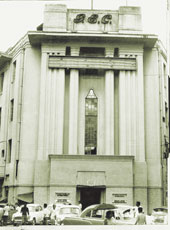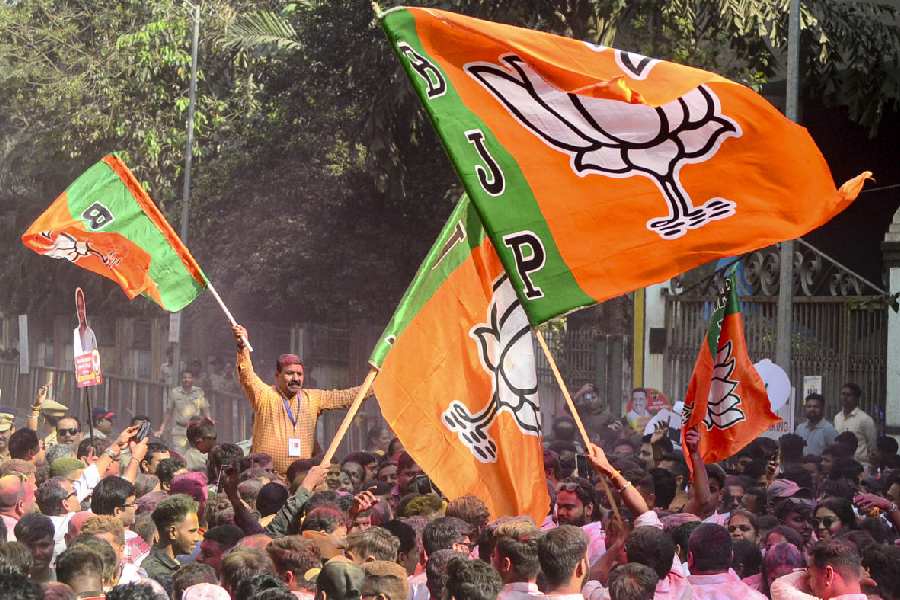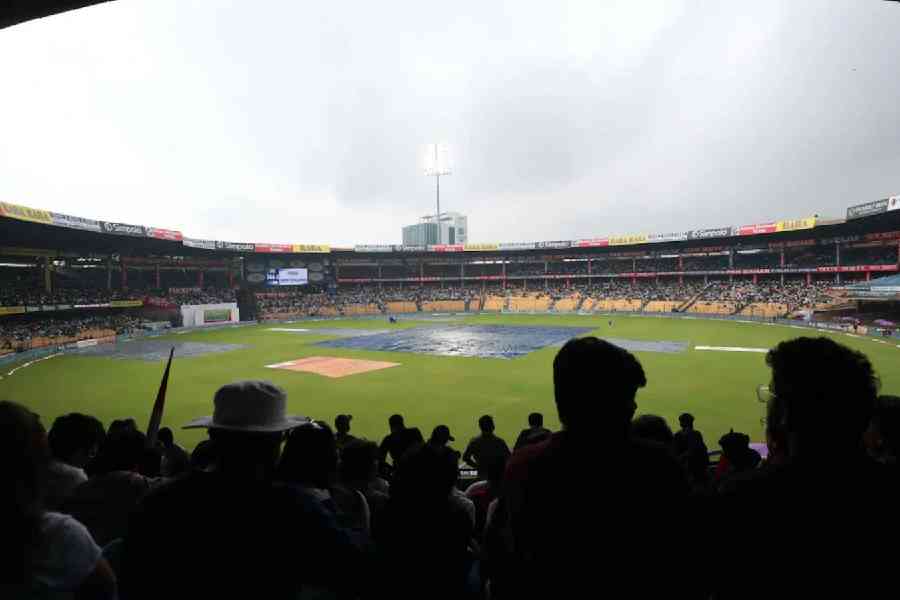 |
 |
 |
| (From top) The GEC building, E-Mall under construction, ‘Mother Teresa Sarani’ in the evening. Telegraph file pictures |
Upcoming malls have made familiar landmarks of Chittaranjan Avenue totally unrecognisable.
One of the most conspicuous of these is the GEC building opposite Hindu Mutual Building at the opening of Madan Street. Massive, though not quite as large as Hindusthan Building, it is a corner building with a spine of glass and rows of windows on all floors which facilitated cross ventilation.
The well-known logo of the company, GEC India Limited, which produced electrical equipment and underwent several name changes before it finally closed, was prominently installed on the terrace and passersby could not help noticing it. Photographs taken in the 1940s (the building came up in 1944) and in the digitised archives of American universities, which can easily be accessed on the Internet, show that it was as spick and span as any of its neighbours.
No more. Soon after GEC folded up, the fate of the building was sealed. Like most office buildings of a certain vintage in this city, within a couple of years, it began to fall apart. The logo vanished. Now it has reinvented itself as E-Mall, where probably everything is virtual except the prices, in the most lurid shades of red. Another office building close to it will meet the same fate soon.
Why isn’t there legislation yet to prevent the conversion of distinguished old buildings into shopping malls?
Bridge for a cause
Talking about landmarks, you know that Shakespeare Sarani was Theatre Road and that Park Street is Mother Teresa Sarani and what your grandfather calls Harrison Road is actually M G Road. You also know (or so we assume) that Rabindra Setu is Howrah bridge and that Vidyasagar Setu is the second Hooghly bridge. But who is Bijon Setu named after?
Bijon Setu, which connects Kasba with Gariahat, is named after Bijon Basu, who was an executive engineer with the Calcutta Improvement Trust (CIT). Basu died under tragic circumstances in August 1974. The 35-year-old engineer was returning home from his sister’s place in Santoshpur and took the train to Sealdah. A gang of robbers got on the train and attacked fellow passengers. Among them were women who were returning from a wedding ceremony. The women were threatened with knives and their jewellery and other valuables were snatched away. Basu protested, but the robbers threw him off from the train. It killed him.
Next time you whiz through Bijon Setu, which was built by the CIT, you could spare a thought for a young life lost for a cause not many stand up for.
Rare face
 |
Leena Kejriwal has already made a name for herself as a remarkable photographer from a traditional Marwari family who has photographed a rare face of Calcutta. The face only reveals itself to those who take the trouble to get themselves acquainted with it. Her book on the city is a labour of love.
Kejriwal shows the same kind of sensitivity in presenting a Paris rarely seen in tourist brochures at her exhibition at Aakriti gallery. She was an artist in residence in France for 20 days in 2005-2006, and with her Canon 20D she captured charming patisseries, the Jewish quarters, shop windows and tea rooms with the understated glamour of old lace and china. Kejriwal loves to look into interiors – often through plate glass – and then zoom in on a rustic lighting a pipe, or a little old lady with a radiant face framed by her white hair (picture above), which she lets down girlishly.
For life
 |
The biggest of names from Calcutta’s art world recently got together to save the life of the 14-year-old Titas Mandal. Titas, the daughter of artist Milanendu Mandal, is suffering from cancer. Artists including Jogen Chowdhury, Paritosh Sen, Sanat Kar, Prakash Karmakar and Amitava Banerjee contributed a collection of their works to the exhibition ‘Support 2007’ at Gallerie 52d at Hindusthan Park, with help from The Artist Community and The Park Hotel. The exhibition (in picture), which started on April 26 will continue till May 10. Proceeds from the sale of the paintings will go towards Titas’s treatment.
Punkah bicentennial
 |
Was it as hot when the British landed?
The poor sweating Company sahibs like Robert Clive or Warren Hastings hardly knew the luxury of ice, and were even denied the doubtful solace of a swinging wet cloth pulled by an obsequious punkahwallah.
The company-era punkah (illustration by Uday Deb), later impressing the Kiplings and Forsters, came into being around 1808. It was first found advertised in Calcutta, in May 1808, as a special attraction to a course of lectures on mechanics, “to which some ladies and gentlemen have decided to subscribe on account of the warmth of the season”.
A century of wars, hot days and long nights necessitating punkahs, followed the itinerant sahib on his conquest of the Hind. The clubs and the courts had them all in the next few decades. The punkahwalla preceded the “kittesol boy”, who waved large fans or chowries of palm leaves, and followed the sahib to the most unlikely of spaces.
The high-strung device was operated with a system of pulleys and chokes, so that the wiry punkahwallah remained invisible to the changing colours of his master’s bed. And the punkah became an icon of the oriental exotic, for those who had yet experience imperial Calcutta’s heat.
The arrival of electrical fans made the punkah recede into the past. But what about having a bicentennial celebration of the punkah next year?










